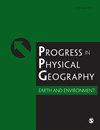地球球体:概念和定义辩论
IF 3.6
3区 地球科学
Q2 GEOGRAPHY, PHYSICAL
Progress in Physical Geography-Earth and Environment
Pub Date : 2024-08-23
DOI:10.1177/03091333241275465
引用次数: 0
摘要
爱德华-苏斯(Eduard Suess)发明的 "生物圈"(biosphere)一词引发了创造球体词的潮流,并逐渐演变成一种热潮。其中一些词,如大气圈和水圈,只是各自地球球体的名称标签。其他一些词,如 geosphere,也主要用作名称,但它们的含义不止一个。然而,许多球体词,包括 "pedosphere"、"biosphere"、"ecosphere"、"anthroposphere"、"sociosphere "和 "technosphere",远不止是名称,它们还具有重要的概念内涵,引发了大量争论。当地球和生命科学家正试图通过模拟地球各组成圈层之间的相互作用来了解地球作为一个整体的运作时,当他们与社会学家、人类学家和其他人文科学领域的成员合作应对当前的环境挑战时,现在似乎正是探究他们所研究的地球圈层词汇的起源和含义的好时机。可以肯定的是,地球系统建模有助于理解包括人类圈层在内的所有地球圈层在不同时间和空间尺度上的相互作用所产生的变化,而多学科、跨学科和跨学科研究则有助于解决可持续发展、气候变化、水资源供应和生物多样性丧失等全球性问题。了解这些方法所使用的许多领域术语的起源、发展和有争议的含义,对其多方面的实践者来说应该是有益的。本文章由计算机程序翻译,如有差异,请以英文原文为准。
Earth’s spheres: Conceptual and definitional debates
Eduard Suess’s invention of the word ‘biosphere’ sparked a trend of coining sphere-words, which has since evolved into something of a craze. Some of these words, such as atmosphere and hydrosphere, are simply name tags for their respective Earth spheres. Others, such as geosphere, are also used mainly as names but they carry more than one meaning. However, many sphere-words, including pedosphere, biosphere, ecosphere, anthroposphere, sociosphere, and technosphere, are far more than just names, bearing as they do, weighty conceptual connotations that fuel considerable debate. At a time when Earth and life scientists are attempting to understand the workings of the planet as a whole by modelling the interaction of its component spheres, and when they are collaborating with sociologists, anthropologists, and members of other human sciences to tackle current environmental challenges, it seems an opportune moment to probe the origin and meaning of words for the Earth spheres they investigate. To be sure, Earth System modelling is helping understand changes resulting from the interaction of all the Earth’s spheres, including the anthroposphere, over various time and space scales, while multidisciplinary, interdisciplinary, and transdisciplinary research is helping to address such global problems as sustainable development, climate change, water supply, and biodiversity loss. An awareness of the origin, development, and disputed meanings of many sphere-words that these approaches employ should prove salutary for their multifarious practitioners.
求助全文
通过发布文献求助,成功后即可免费获取论文全文。
去求助
来源期刊
CiteScore
7.20
自引率
5.10%
发文量
53
审稿时长
>12 weeks
期刊介绍:
Progress in Physical Geography is a peer-reviewed, international journal, encompassing an interdisciplinary approach incorporating the latest developments and debates within Physical Geography and interrelated fields across the Earth, Biological and Ecological System Sciences.

 求助内容:
求助内容: 应助结果提醒方式:
应助结果提醒方式:


